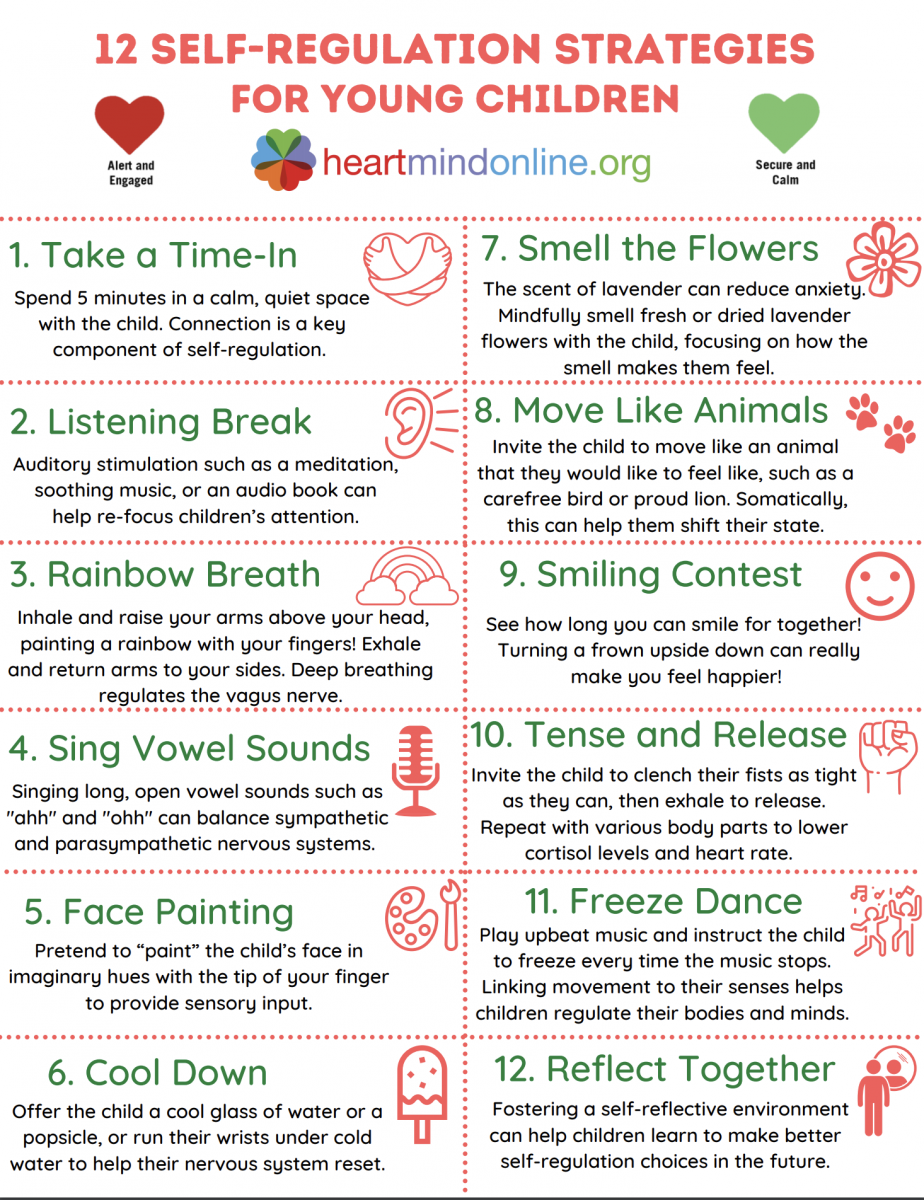 We can help the young children in our lives manage challenging feelings by strengthening their red Alert & Engaged hearts. Feeling Alert & Engaged is linked to recognizing and naming emotions and self-regulation. While toddlers and pre-school aged children are learning to notice their feelings and exercise self-control, the adults in their lives are still essential co-regulators. During this developmental phase, children need their parents, teachers, and caregivers to respond appropriately to their emotional cues, help them manage disruptive behaviors, and model safe, healthy ways to navigate big feelings.
We can help the young children in our lives manage challenging feelings by strengthening their red Alert & Engaged hearts. Feeling Alert & Engaged is linked to recognizing and naming emotions and self-regulation. While toddlers and pre-school aged children are learning to notice their feelings and exercise self-control, the adults in their lives are still essential co-regulators. During this developmental phase, children need their parents, teachers, and caregivers to respond appropriately to their emotional cues, help them manage disruptive behaviors, and model safe, healthy ways to navigate big feelings.
Adults can help children follow a 3-Step Recipe for Self-Regulation based on Dr. Daniel Siegel’s “Name it to tame it” process:
Step 1: Notice the feeling – Help the child tune into how their body is feeling. Ask questions like: What is going on in your body right now? How does your tummy feel? How does your throat feel? Do your muscles feel tight or relaxed? Is your heart beating quickly? Are your eyes making tears?
Step 2: Name the feeling – Invite the child to name how they are feeling. Affirm their answer (“yes, I can see from your tears that you’re feeling sad right now”) and extend upon it to build their emotional vocabulary and awareness (“I bet you might be feeling disappointed too, I know you really wanted to keep playing at the park").
Step 3: Respond to the feeling – This is when the dance of co-regulation really begins. Taking into account the child’s present state[1], temperament, and preferences, engage them in a brief activity to boost self-regulation. Tell the child that you are going to do something special together now to help their red Alert & Engaged heart feel better, such as one of the activities described below.
12 Self-Regulation Strategies for Young Children
Download the infographic below!
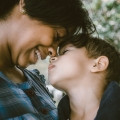
1) Take a time-in. Spend 5 minutes in a calm, quiet space with the child. Offer to hold the child, talk, sing, sway, or just sit together in silence. Connection is a key component of self-regulation, as is described in Dr. Daniel Siegel’s connect and redirect approach.

2) Pause for a listening break. Listen to a kid-friendly meditation with the child, such as one developed by child mindfulness expert Susan Kaiser Greenland. Auditory stimulation such as a meditation, soothing music, or an audio book can help re-focus children’s attention without the overstimulation of staring at a screen.
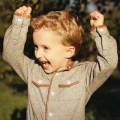 3) Do the rainbow breath. Face the child and begin with your hands at your sides. As you inhale, slowly raise your arms until your palms touch above your head with straight arms, imagining that you are painting a rainbow with your finger tips! As you exhale, gently lower your hands to your sides, painting a rainbow from the top down. Repeat with the child until they feel ready to move on. Long, slow breathing helps soothe the nervous system by regulating the vagus nerve.
3) Do the rainbow breath. Face the child and begin with your hands at your sides. As you inhale, slowly raise your arms until your palms touch above your head with straight arms, imagining that you are painting a rainbow with your finger tips! As you exhale, gently lower your hands to your sides, painting a rainbow from the top down. Repeat with the child until they feel ready to move on. Long, slow breathing helps soothe the nervous system by regulating the vagus nerve.

4) Sing vowel sounds together. Take turns choosing an open vowel sound to sing, such as "ahhh" or "ohhhhh." Inhale deeply and as you exhale, sing the vowel sound for as long as is comfortable. Repeat several times. This exercise, called toning, helps balance sympathetic and parasympathetic nervous systems by slowing down and deepening the breath.
 5) Paint their face. Use a clean, dry paint brush, feather, or the tip of your finger to pretend to “paint” the child’s face in imaginary hues. Invite them to close their eyes and imagine beautiful colours being swept across their cheeks. This activity uses light tactile stimulation and visualization to regulate the nervous system.
5) Paint their face. Use a clean, dry paint brush, feather, or the tip of your finger to pretend to “paint” the child’s face in imaginary hues. Invite them to close their eyes and imagine beautiful colours being swept across their cheeks. This activity uses light tactile stimulation and visualization to regulate the nervous system.
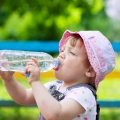 6) Cool things down. Offer the child a cool glass of water, some frozen fruit or a popsicle, or run their wrists under cold water (you could even offer a cold shower or bath for the brave at heart!). Exposure to tolerable cold can act as a mini “shock” to the nervous system and help it reset.
6) Cool things down. Offer the child a cool glass of water, some frozen fruit or a popsicle, or run their wrists under cold water (you could even offer a cold shower or bath for the brave at heart!). Exposure to tolerable cold can act as a mini “shock” to the nervous system and help it reset.
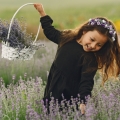 7) Smell the flowers. The scent of lavender can decrease anxiety and reduce stress. It can be safe to use lavender essential oil for kids over age 5; for younger children, smell fresh or dried lavender flowers together instead, focusing on how the scent makes them feel.
7) Smell the flowers. The scent of lavender can decrease anxiety and reduce stress. It can be safe to use lavender essential oil for kids over age 5; for younger children, smell fresh or dried lavender flowers together instead, focusing on how the scent makes them feel.
 8) Move like an animal. Ask the child what animal they feel like right now, then invite them to move how that animal moves (eg. a grumpy bear might stomp around the room, or a sad snake might slowly slither on their stomach). Then ask them what animal they would rather feel like, and invite them to move that way instead (eg. a happy bird might flit around the room on tip toe ). This activity, inspired by somatic therapy, helps children shift their emotions by moving in a way that matches their desired emotional state.
8) Move like an animal. Ask the child what animal they feel like right now, then invite them to move how that animal moves (eg. a grumpy bear might stomp around the room, or a sad snake might slowly slither on their stomach). Then ask them what animal they would rather feel like, and invite them to move that way instead (eg. a happy bird might flit around the room on tip toe ). This activity, inspired by somatic therapy, helps children shift their emotions by moving in a way that matches their desired emotional state.
 9) Have a smiling contest. Face the child with your cheesiest grin, and have them do the same. See how long you can both keep smiling for. Research shows that facial expressions can have a small, but significant, impact on our emotions: turning your frown upside down can really make you happier!
9) Have a smiling contest. Face the child with your cheesiest grin, and have them do the same. See how long you can both keep smiling for. Research shows that facial expressions can have a small, but significant, impact on our emotions: turning your frown upside down can really make you happier!
 10) Tense then release. Invite the child to clench their fists as tight as they can, then exhale to release. Repeat several times, or see what it feels like to tense different body parts like their legs, arms, or even their face! This exercise is a form of progressive muscle relaxation, which has been proven to decrease heart rate and reduce cortisol levels.
10) Tense then release. Invite the child to clench their fists as tight as they can, then exhale to release. Repeat several times, or see what it feels like to tense different body parts like their legs, arms, or even their face! This exercise is a form of progressive muscle relaxation, which has been proven to decrease heart rate and reduce cortisol levels.
 11) Play a mindful game. Play frog jumps, shake it up, balloon arms, or freeze dance together. By connecting children’s movements to their senses, these games help children to regulate their bodies, sensations, and thoughts. Playing with a supportive adult gives young children the confidence and support they need to try something new.
11) Play a mindful game. Play frog jumps, shake it up, balloon arms, or freeze dance together. By connecting children’s movements to their senses, these games help children to regulate their bodies, sensations, and thoughts. Playing with a supportive adult gives young children the confidence and support they need to try something new.
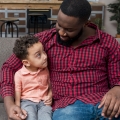 12) Reflect together. Fostering a self-reflective [2]environment can help children learn to make better self-regulation choices in the future. Ask children to reflect on questions like: “how did my body feel before? How does it feel now? How did I help myself when I was feeling ____? How can I help myself next time I feel this way?”
12) Reflect together. Fostering a self-reflective [2]environment can help children learn to make better self-regulation choices in the future. Ask children to reflect on questions like: “how did my body feel before? How does it feel now? How did I help myself when I was feeling ____? How can I help myself next time I feel this way?”
Image credit[3]
According to Dr. Stephanie Carlson, Distinguished Professor at the Institute of Child Development, University of Minnesota, pausing before doing or "thinking twice" is integral to the development of executive functions in children, which lie at the root of self-regulation. Watch this TED talk to learn Dr. Carlson's "Tree of Success" model for nurturing self-regulation skills in young children through reflection.
According to Dr. Stuart Shankar, CEO of the MEHRIT centre for self-regulation it is particularly beneficial to investigate whether the child is actually misbehaving or, as is more likely the case, experiencing stress.
Images created by jcomp, standret, aleksandarlittlewolf, bearfotos, freepic.diller, and karlyukav for freepik.com.

